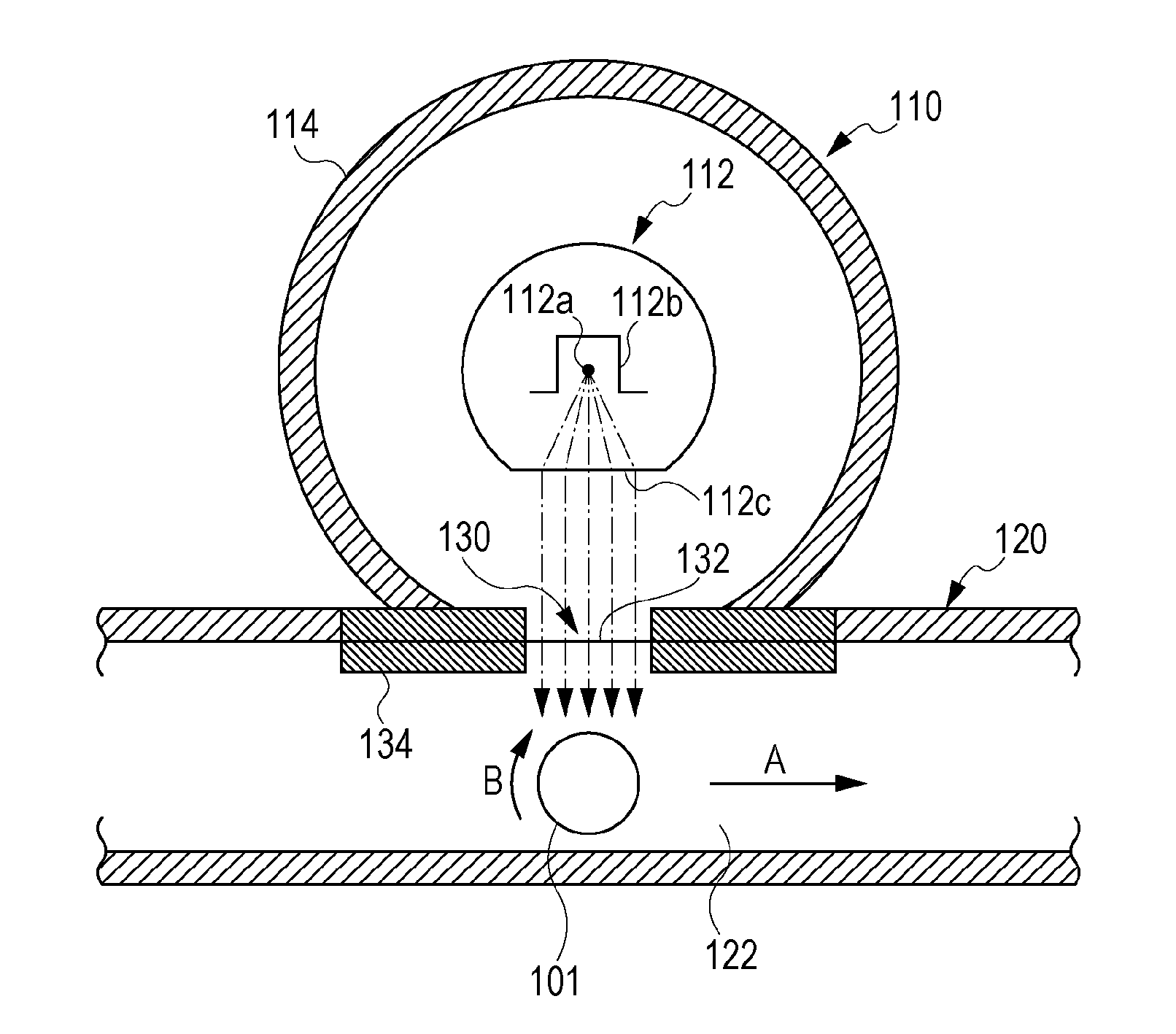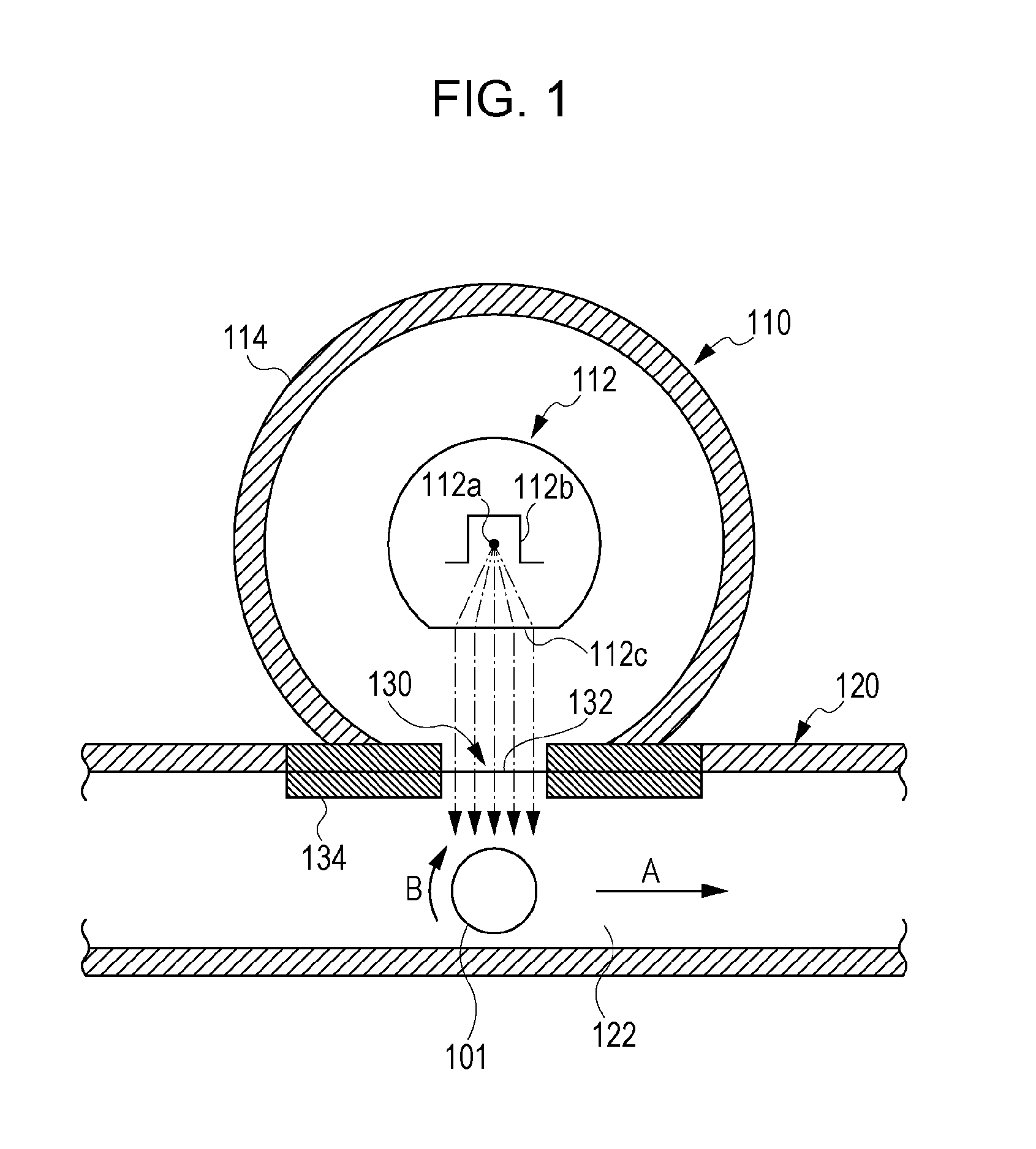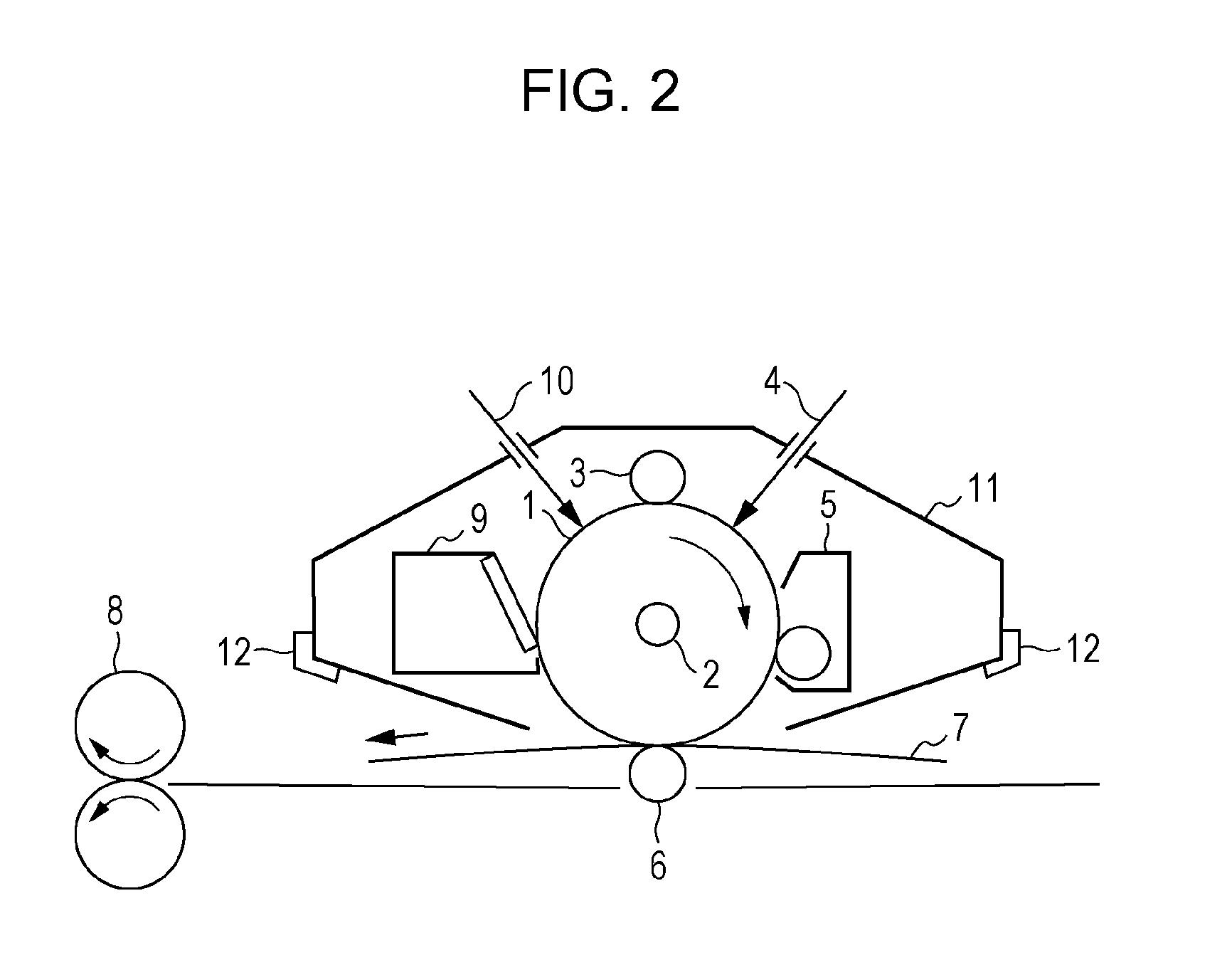Electrophotographic photosensitive member, process cartridge, electrophotographic apparatus, method of producing electrophotographic photosensitive member, and urea compound
- Summary
- Abstract
- Description
- Claims
- Application Information
AI Technical Summary
Benefits of technology
Problems solved by technology
Method used
Image
Examples
production example 1
Manufacture of Exemplary Compound (1-1)
[0099]A compound represented by the following formula (A) (1,3-bis[4-(2-hydroxy-ethyl)-phenyl]-urea) was synthesized. 506.2 parts of 3 normal aqueous hydrochloric acid was slowly added dropwise to 200.0 parts of 2-(4-aminophenyl)ethanol in a three-neck flask and was then stirred for 30 minutes. 58.4 parts of urea and 220 parts of ion-exchanged water were added to the mixture, which was then refluxed for 10 hours. After cooling, precipitated crystals were collected with a filter. The crystals were dispersed and washed with 1300 parts of ion-exchanged water and were collected with a filter. The crystals were dispersed and washed with 1000 parts of ethanol, were collected with a filter, and were dried at 30° C. under reduced pressure to yield 171.1 parts of the compound represented by the following formula (A) as slight pink crystals. The following are characteristic peaks of the IR spectrum and NMR data of the product.
[0100]IR (cm−1, KBr): 3378, ...
production example 2
Production of Exemplary Compound (1-2)
[0140]A compound represented by the following formula (D) (1-(2-hydroxyethyl)-3-methyl-1,3-diphenylurea) was synthesized. A solution of 4.8 parts of phenylisocyanate dissolved in 20 parts of tetrahydrofuran was slowly added dropwise to 5.5 parts of N-(2-hydroxyethyl)aniline and 20 parts of tetrahydrofuran in a three-neck flask while stirring. The solution was stirred at room temperature for two hours and was refluxed for one hour. The solvent was evaporated under reduced pressure, and volatile components were evaporated at 80° C. at a reduced pressure of 500 Pa to yield 10.4 parts of cream crystals. 4.3 parts of the cream crystals were dissolved in 40 parts of dry tetrahydrofuran in a three-neck flask. 0.03 parts of p-toluenesulfonic acid monohydrate was added to the solution, to which 2.1 parts of 3,4-dihydro-2H-pyran was then slowly added dropwise. The solution was then stirred at 60° C. for three hours. After cooling, 100 parts of water was a...
production example 3
Production of Exemplary Compound (1-3)
[0161]A compound represented by the following formula (E) (1,3-bis(3-hydroxymethyl-phenyl)-urea) was synthesized. 162 parts of 3 normal aqueous hydrochloric acid was slowly added dropwise to 50.0 parts of 3-aminobenzyl alcohol in a three-neck flask and was then stirred for 30 minutes. 16.3 parts of urea and 65 parts of ion-exchanged water were added to the mixture, which was then refluxed for 10 hours. After cooling, precipitated crystals were collected with a filter. The crystals were dispersed and washed with 400 parts of ion-exchanged water and were collected with a filter. The crystals were dispersed and washed with 400 parts of ethanol, were collected with a filter, and were dried at 30° C. under reduced pressure to yield 33.7 parts of the compound represented by the following formula (E) as white crystals.
[0162]The following are NMR data.
[0163]1H-NMR (ppm, DMSO-d6): δ=[0164]8.56 (s, 2H, NH)[0165]7.5-6.8 (m, 8H)[0166]5.12 (t, 2H, J=5.8 Hz, ...
PUM
| Property | Measurement | Unit |
|---|---|---|
| Electric charge | aaaaa | aaaaa |
| Photosensitivity | aaaaa | aaaaa |
Abstract
Description
Claims
Application Information
 Login to View More
Login to View More - R&D
- Intellectual Property
- Life Sciences
- Materials
- Tech Scout
- Unparalleled Data Quality
- Higher Quality Content
- 60% Fewer Hallucinations
Browse by: Latest US Patents, China's latest patents, Technical Efficacy Thesaurus, Application Domain, Technology Topic, Popular Technical Reports.
© 2025 PatSnap. All rights reserved.Legal|Privacy policy|Modern Slavery Act Transparency Statement|Sitemap|About US| Contact US: help@patsnap.com



